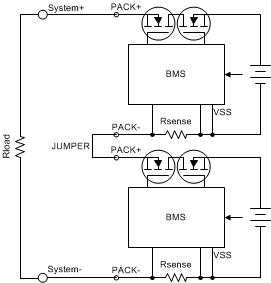Could our BQ76200 realize two BQ76200 connect two series battery.
One series battery 6s 25.5V. the other one series battery also 6s 25.5V.
two bq76200 protect each 6s 25.5V.
Battery + connect bq76200 one pack+, bq76200 one pack- connect bq76200 two pack+, bq76200 two pack- connect GND,
is there any risk for this application.
hope for your comments.


